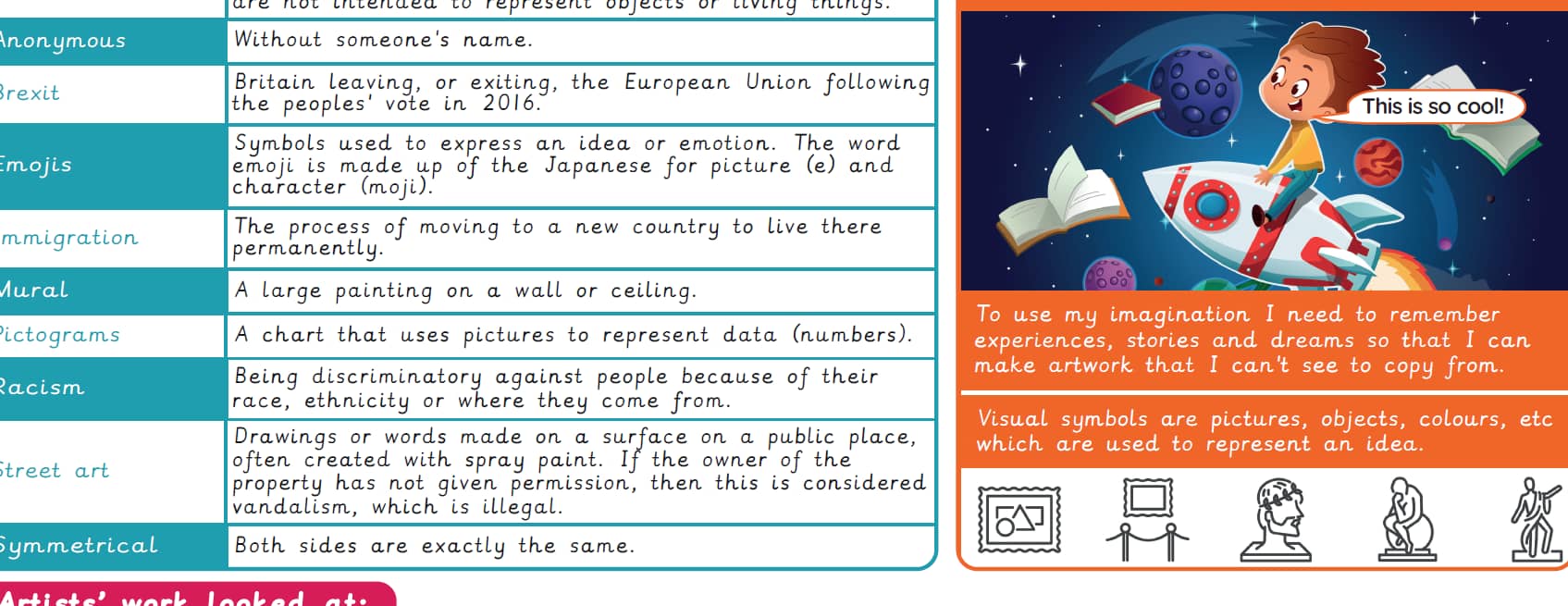
A Knowledge organiser that captures the essential knowledge and skills learnt throughout the now archived unit Art and Design, Year 5, Every Picture Tells a Story.
This Art and design resource is designed to support the pupils as they explore how visual symbols, abstract art, and storytelling are used in artistic expression. It introduces key vocabulary such as abstract art, murals, pictograms, street art, and visual symbols, helping the pupils understand how artists use imagery to convey ideas and emotions. The pupils will also learn about concepts like symmetry, speech bubbles, and the use of emojis in modern visual communication.

A Knowledge organiser that captures the essential knowledge and skills learnt throughout the now archived unit Art and Design, Year 5, Art and Design Skills.
This resource is designed to support pupils in developing various artistic techniques and approaches. It introduces key vocabulary such as analytical observational drawing, annotation, continuous line drawing, collage, and exploded diagrams, helping the pupils understand different methods of creating and presenting artwork. The pupils will also explore the concepts of invention and prototypes and how computer-aided design (CAD) can be used in artistic processes.
Note: This resource is from our archived Art and design scheme, which is still available but no longer updated to reflect curriculum changes or publishing updates.
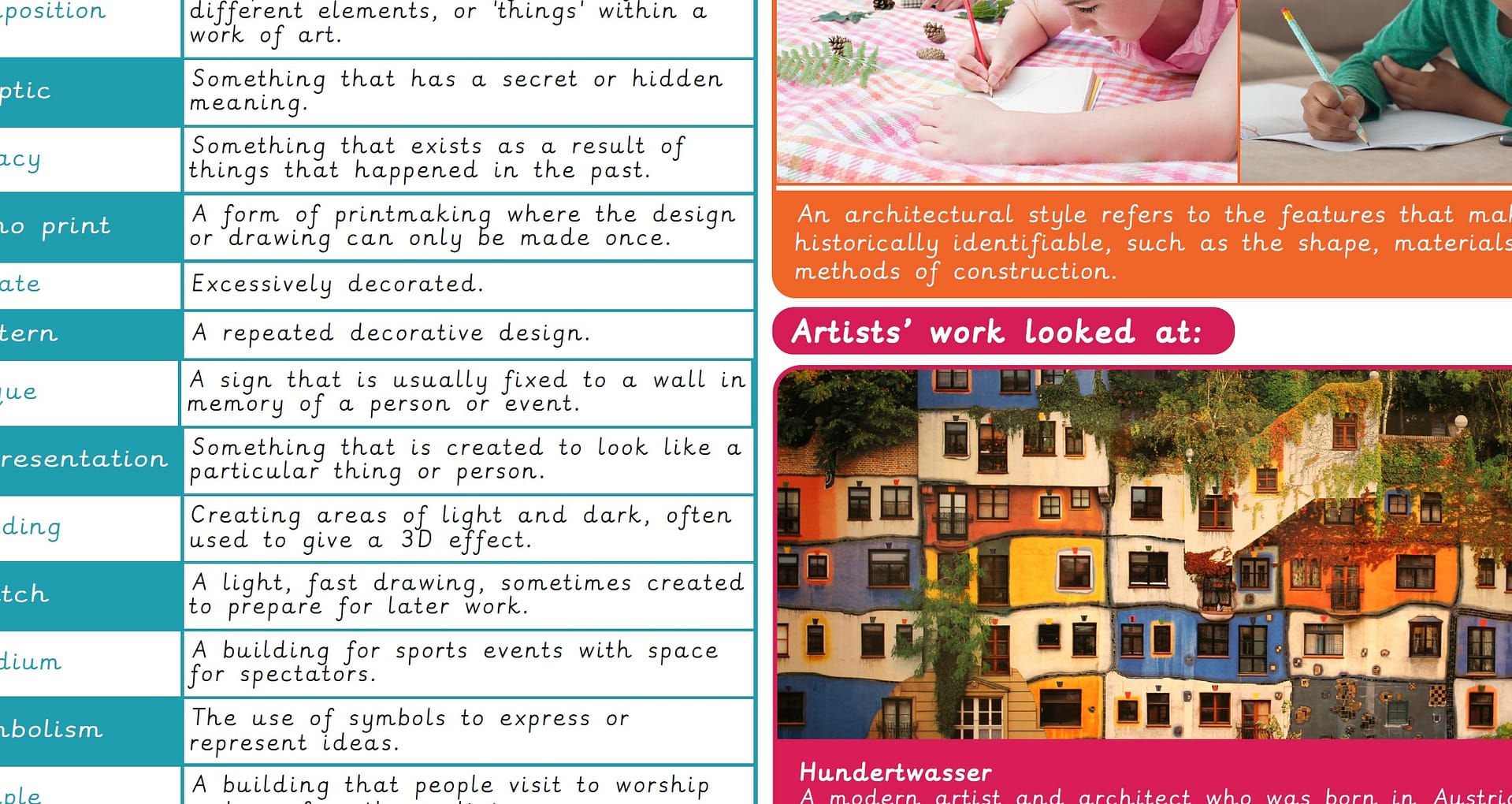
A Knowledge organiser that captures the essential knowledge and skills learnt throughout the now archived unit Art and Design, Year 5, Formal Elements of Art: Architecture.
This resource is designed to support the pupils as they explore key architecture and design elements. It introduces key vocabulary such as amphitheatre, ornate, composition, pattern, and symbolism, helping the pupils understand architectural styles and features. The pupils will also learn about architects as designers of buildings and explore terms like stadium, temple, and plaque, which relate to different types of structures.
Note: This resource is from our archived Art & design scheme, which is still available, but is no longer updated to reflect any curriculum changes or publishing updates.
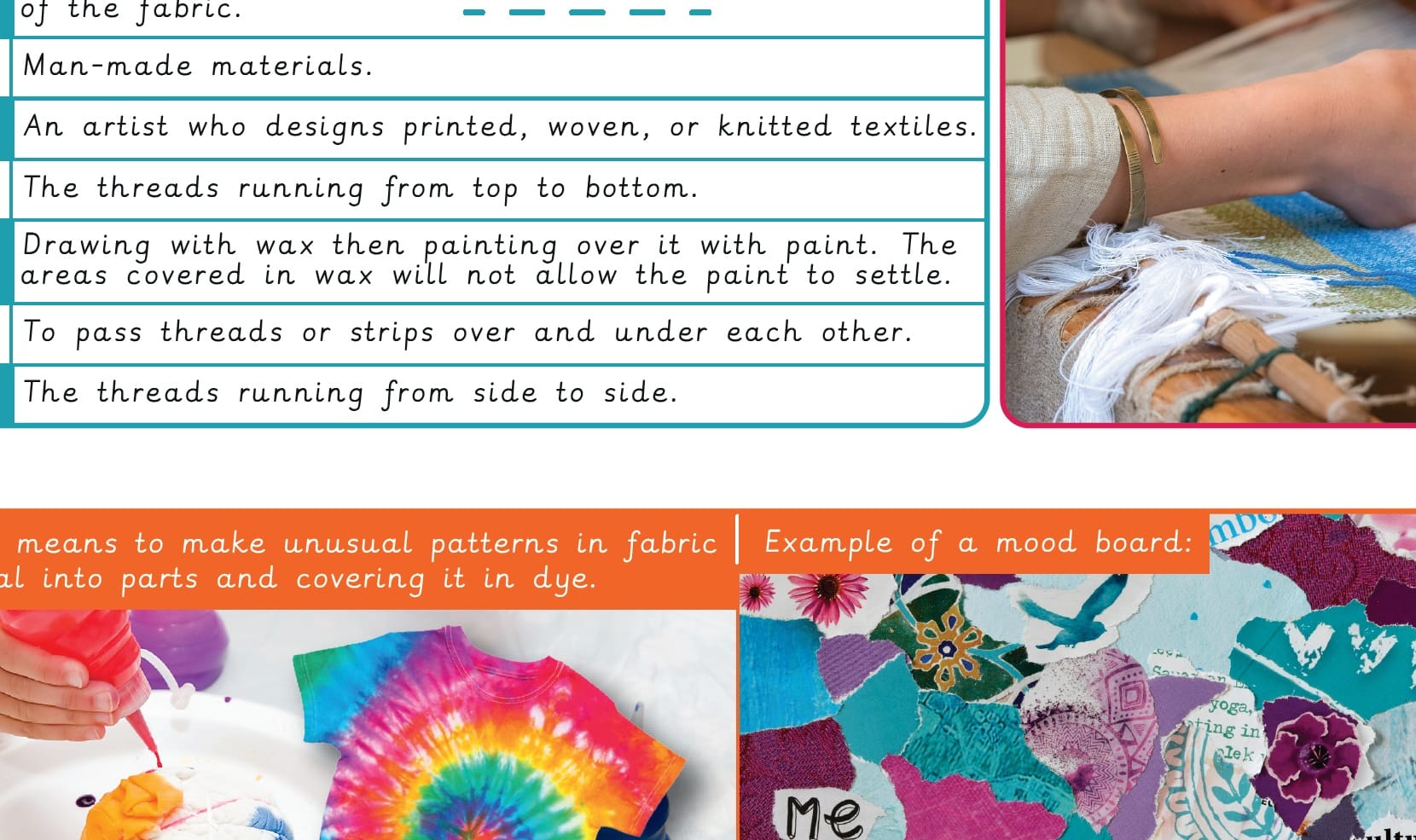
Aimed at pupils, a single page which gives key facts and definitions from the unit.
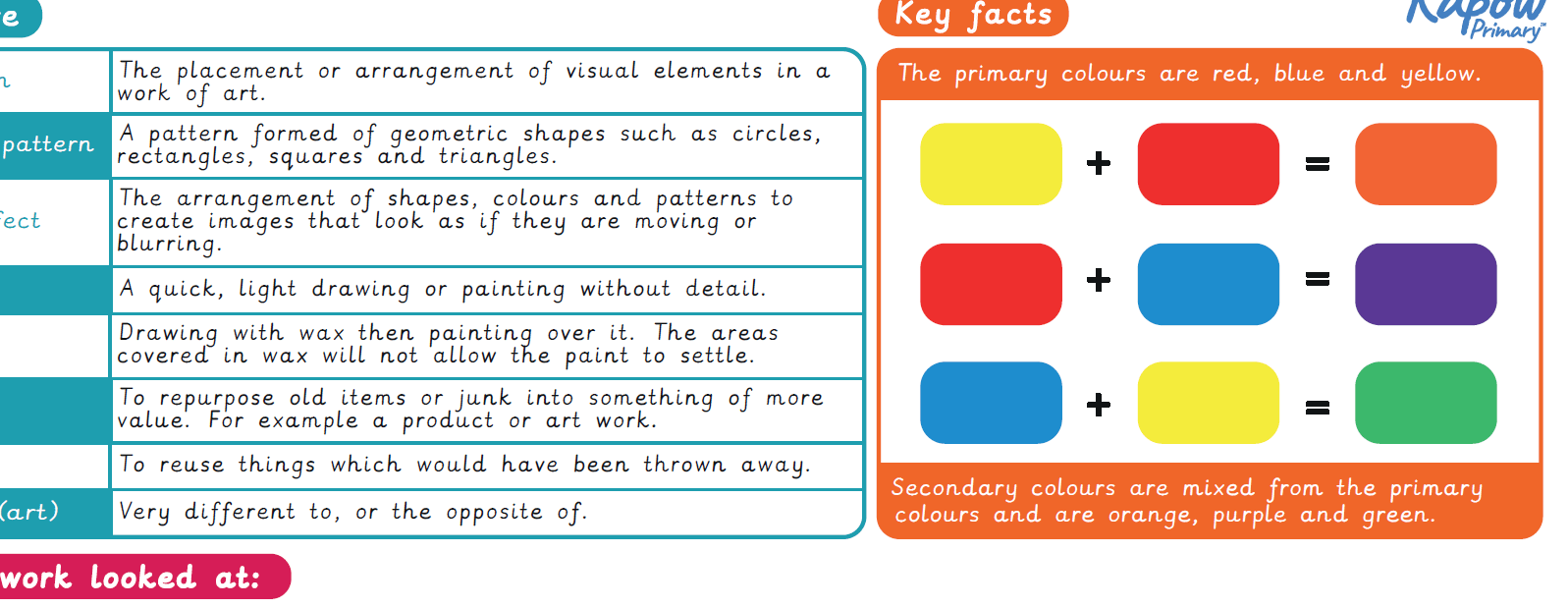
A Knowledge organiser that captures the essential knowledge and skills learnt throughout the now archived unit Art and Design, Year 4, Sculpture.
This resource is designed to support the pupils as they explore different sculptural techniques and materials. It introduces key vocabulary such as composition, geometric pattern, optical effect, wax resist, and upcycle, helping the pupils understand how artists use form, texture, and contrast to create three-dimensional artwork. The pupils will also study the work of sculptors such as El Anatsui, Sokari Douglas Camp, Sam Francis, and Giuseppe Arcimboldo, examining how they use different materials and artistic methods to produce unique sculptures. It is perfect for consolidating essential knowledge and encouraging creativity by allowing the pupils to experiment with various sculptural techniques.
Note: This resource is from our archived Art & design scheme, which is still available but is no longer updated to reflect any curriculum changes or publishing updates.

A Knowledge organiser that captures the essential knowledge and skills learnt throughout the unit Art and Design, Year 4, Every Picture Tells a Story.
This resource is designed to support the pupils as they explore how artists use visual storytelling to convey meaning and emotion. It introduces key vocabulary such as narrative, abstract, pop art, re-enact, and preparatory drawing, helping the pupils understand how different artistic styles can be used to communicate ideas. The pupils will also study works by artists including Paula Rego, David Hockney, Pieter Brueghel, Edward Hopper, and Fiona Rae, analysing how their paintings and prints tell stories through composition, colour, and subject matter. It is perfect for consolidating essential knowledge and encouraging creativity by allowing the pupils to interpret and create their own narrative artwork.
Note: This resource is from our archived Art & design scheme, which is still available, but is no longer updated to reflect any curriculum changes or publishing updates.
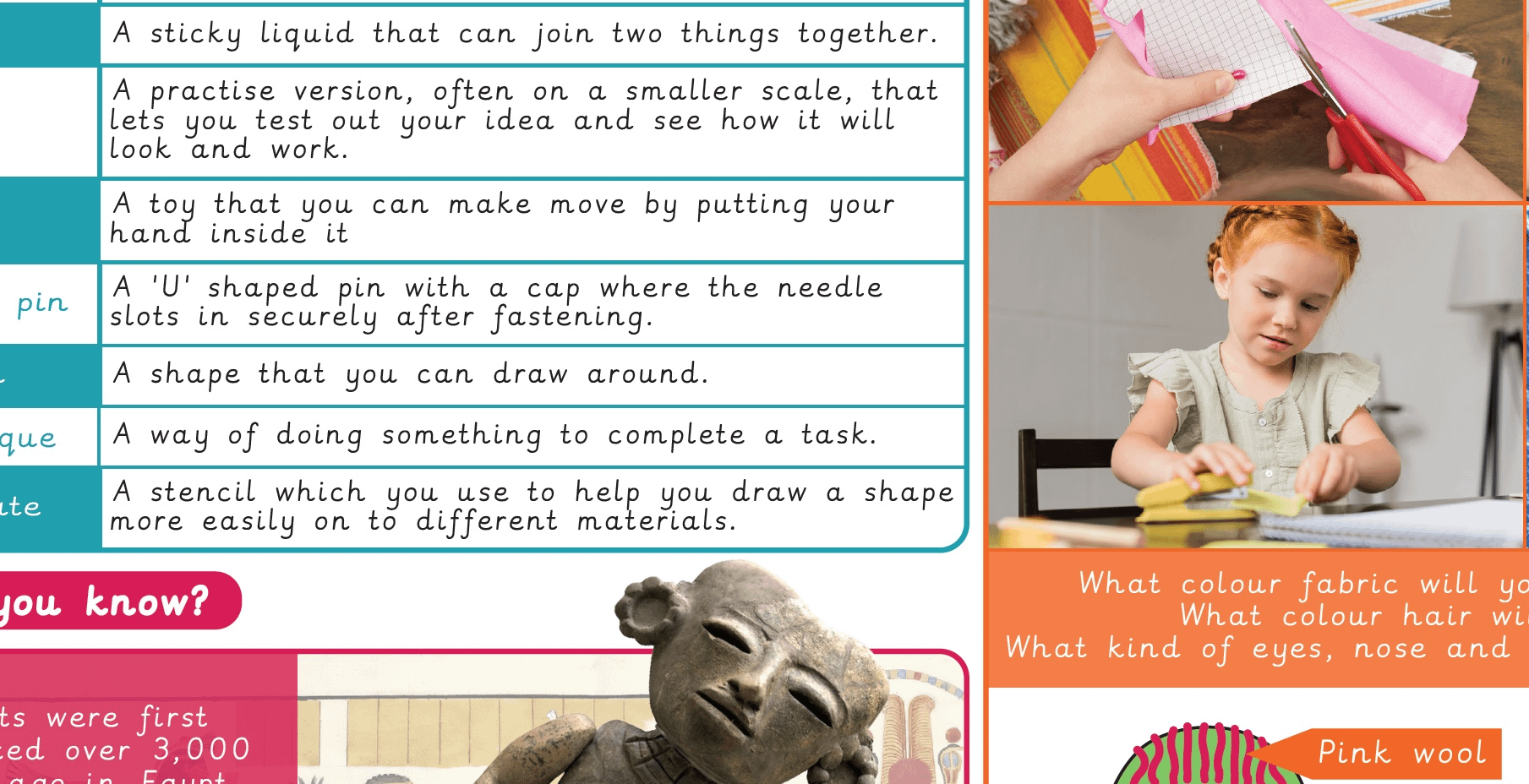
A Knowledge organiser that captures the essential knowledge and skills learnt throughout the Year 1 Design and Technology (D&T) unit Textiles: Puppets. Focusing on textiles and creating puppets, is suitable for printing for each pupil and can also be printed on A3 for classroom display. It contains the key vocabulary for the unit as well as information to help recall key concepts.
This resource introduces the pupils to the basics of textile design and construction as they create their own custom hand puppets. Children will explore techniques such as cutting, glueing, stapling, and pinning to assemble their designs. They will also learn how to use tools like safety pins and templates to bring their ideas to life. Key vocabulary includes terms such as fabric, design, template, stencil, decorate, and technique, helping the pupils build a foundation in textile-based craftsmanship. The pupils are encouraged to experiment with materials like felt, beads, buttons, and wool to personalize their puppets with unique colours, textures, and features. Key facts within the organiser highlight the history of puppets, first invented over 3,000 years ago in Egypt and originally made from clay. This historical context adds depth to the project, fostering curiosity about the origins and cultural significance of puppets.
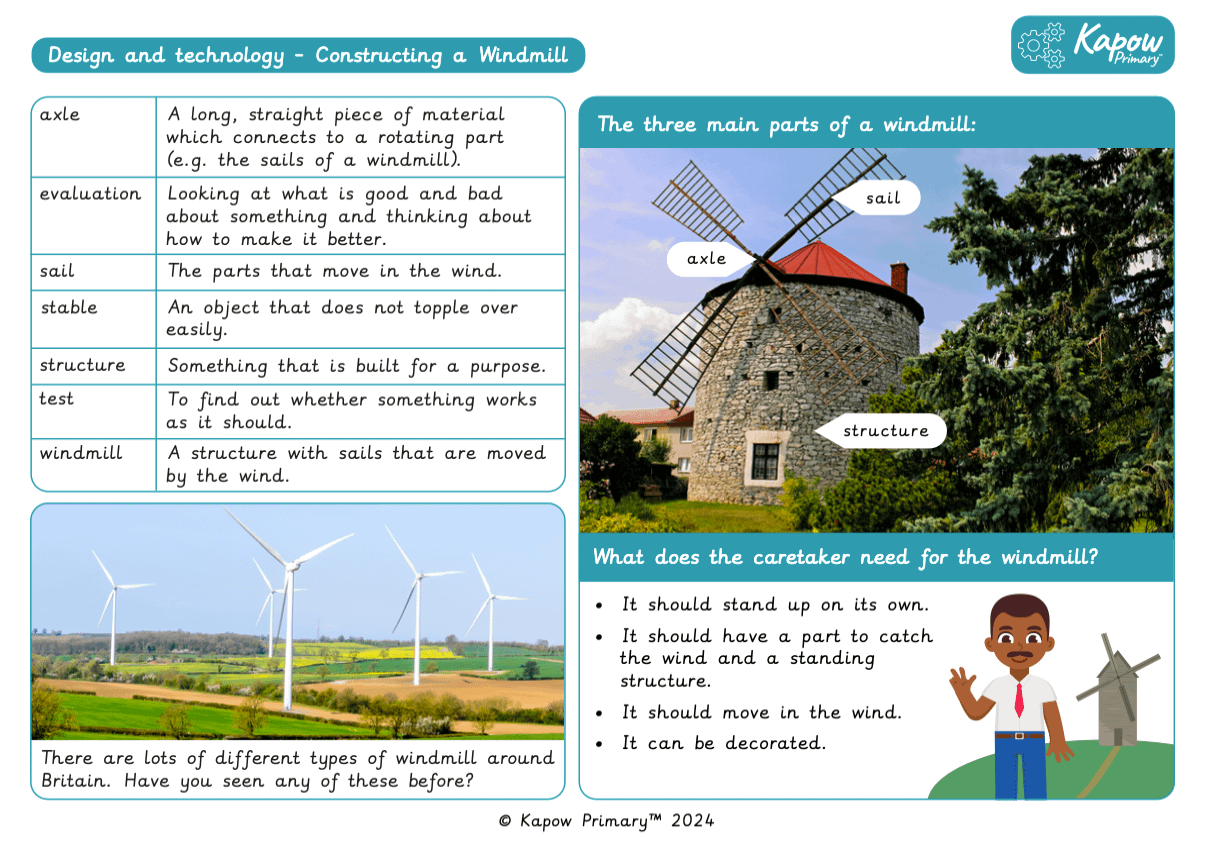
A Knowledge organiser that captures the essential knowledge and skills learnt throughout the Year 1 Design and technology (D&T) unit constructing a windmill.
This resource introduces the pupils to the basics of designing and building functional structures by constructing their own windmills. The pupils will learn about the three main parts of a windmill: the sail, axle, and structure while developing an understanding of how these components work together to harness the power of the wind. Key vocabulary includes terms like axle, sail, structure, stable, evaluation, and test, helping the pupils build a strong foundation in engineering and problem-solving. The pupils are encouraged to design stable windmills that can stand on their own and have moving parts to catch the wind. They will also explore creative ways to decorate their windmills, adding a personal touch to their projects. The document emphasises the importance of testing and evaluating designs, encouraging the pupils to think critically about what works well and how to make improvements. Through this process, the pupils develop practical problem-solving skills and an understanding of how design can serve a purpose.
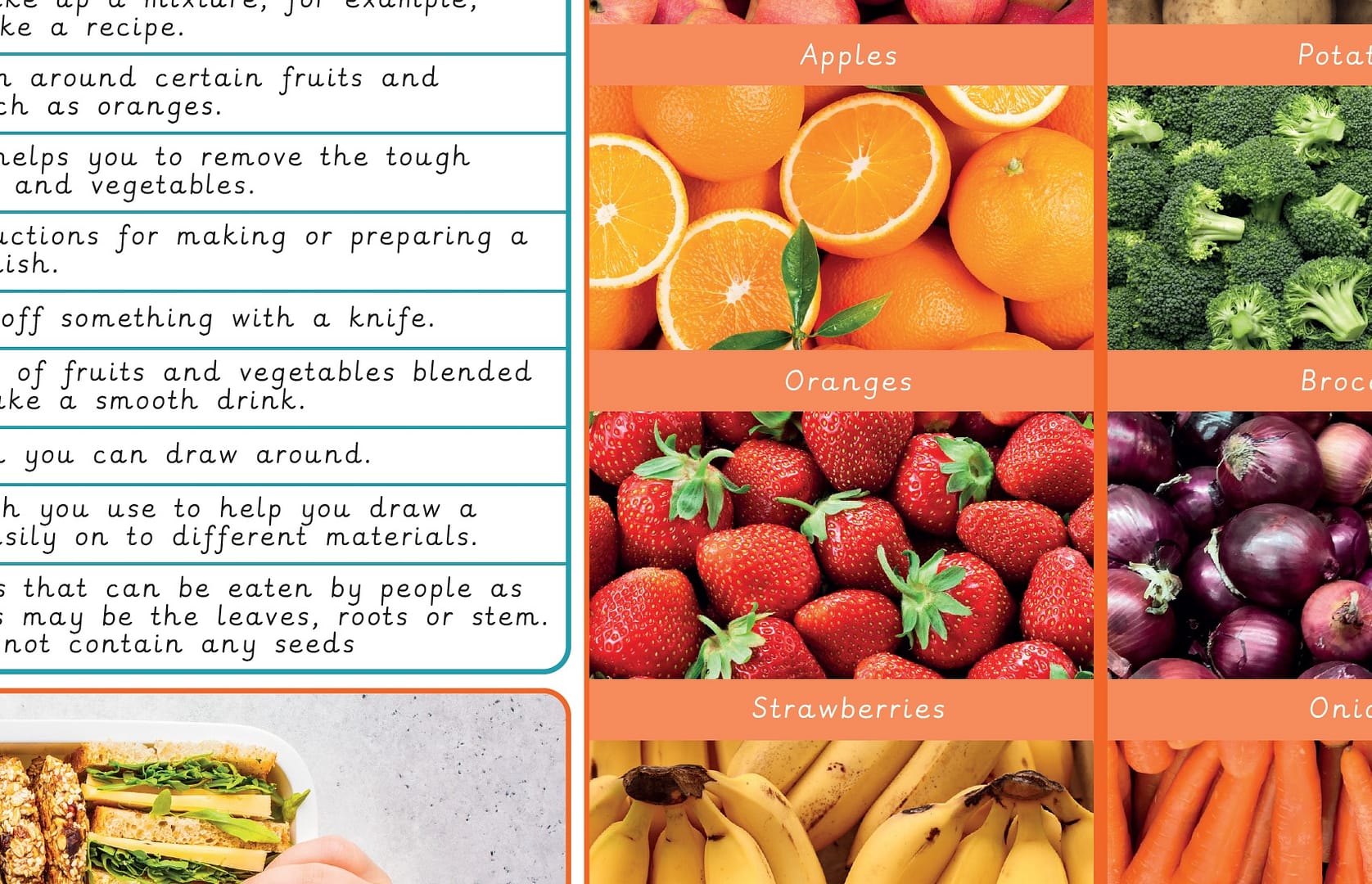
A Knowledge organiser that captures the essential knowledge and skills learnt throughout the now archived Year 1 Design and technology (D&T) unit fruit and vegetables.
This resource introduces the pupils to the importance of healthy eating and food preparation. It explains the differences between fruits, such as oranges and strawberries, which contain seeds, and vegetables, like carrots and broccoli, which do not. The pupils will also learn about the need to eat at least five portions of fruit and vegetables daily to maintain good health. The organiser includes key vocabulary words, such as blender, peeler, slice, smoothie, and recipe, to build the pupils’ understanding of the tools and techniques used in preparing food. For example, a peeler is used to remove the skin from certain fruits and vegetables, while a blender helps create smoothies by mixing ingredients into a smooth liquid. Activities encourage pupils to explore different fruits and vegetables, focusing on their textures, colours, and tastes. They will practise skills like peeling, slicing, and blending, developing confidence in handling ingredients and understanding how tools assist in preparation. The focus on food hygiene, including washing hands and cleaning tools, ensures safe and effective learning.









